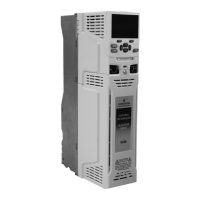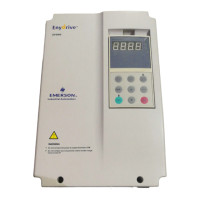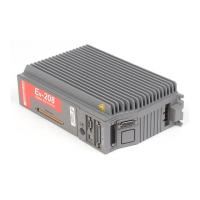Safety
information
Product
information
Mechanical
installation
Electrical
installation
Getting
started
User Menu A
Commissioning
Advanced
Parameters
Diagnostics Optimization CT MODBUS RTU Technical Data
E300 Design Guide 177
Issue Number: 1
7.20 Peak curve operation
Peak curve operation optimizes the speed profile independent of the moment when the signal to stop occurs. Peak curve operation is especially
suited to elevators, where the rated speed cannot be achieved on some floors, due to differing floor level distances, or where the rated speed cannot
be achieved on a single floor travel, due to higher elevator speeds. Using Peak curve operation allows the use of a single speed reference, with the
maximum profile speed automatically controlled. This avoids the use of an intermediate speed, or operating for extended periods at low speed and
therefore reduces travel times for systems with different floor level distances.
Peak curve operation modifies the maximum profile speed based upon when the signal to stop occurs, ensuring that the required stopping distance is
always achieved and the floor level is reached with the programmed jerks and deceleration rate. This method of motion profiling gives the additional
benefit that the time taken to reach a given floor is the fastest possible. Peak curve operation can be enabled and used along with floor sensor
correction control. Operation in Creep to floor mode may be enhanced by enabling Peak curve operation In Direct to floor mode, Peak curve
operation is always enabled.
The effect on the speed profile, with Peak curve operation enables, depends on the point during the profile when the stop signal is given. This results
in the following three scenarios:
Parameter Description
Peak Curve Enable (G41)
Enables Peak curve operation in Creep to floor mode. In Direct to floor mode, Peak curve operation is
always active and this parameter has no effect
Peak Curve Setpoint Distance (G42)
Creep to floor:
When any speed reference V1 to V10 other than Creep speed is selected and active, this indicates the
distance to slow from the selected speed to Creep speed using the Deceleration Rate (G12), Run Jerk 3
(G15) and Run Jerk 4 (G16).
When Creep speed is selected and active, this indicates the distance to slow from Creep speed to a stop
using Creep Stop Deceleration Rate (G17) and Creep Stop Jerk (G18).
Direct to floor:
This indicates the distance from the selected speed to a stop using the Deceleration Rate (G12), Run Jerk
3 (G15) and Run Jerk 4 (G16).
Peak Curve Measured Distance (G43)
Creep to floor:
When any speed reference V1 to V10 other than Creep speed is de-selected or a stop is requested, this
shows the distance that is accumulated until Creep speed is reached.
Direct to floor:
When any speed reference V1 to V10 is de-selected or a stop is requested, this shows the distance that is
accumulated until a complete stop.
Pea
k
Curve Activated (G44)
Indicates when Peak curve operation has been activated during acceleration. Reset to Off (0) once a new
travel has started.

